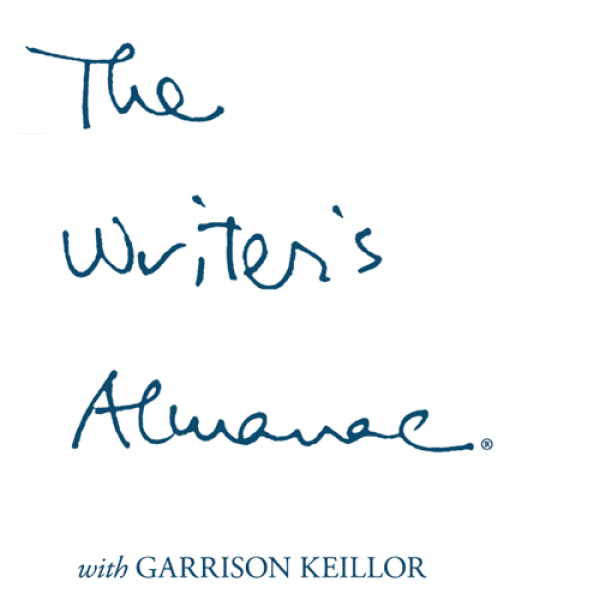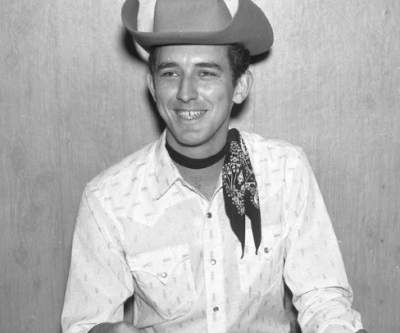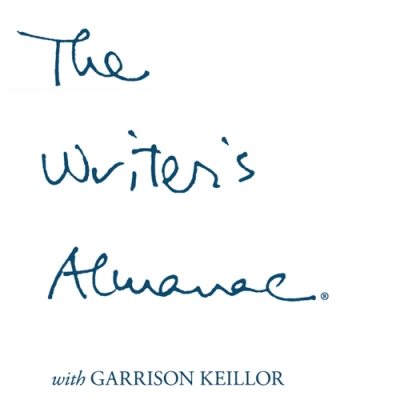December 20, 2018
Tuesday
8:00 p.m.
Minneapolis, MN
Test schedule
A live performance with Robin and Linda Williams at the Cedar Cultural Center
May 20, 2018
Sunday
3:00 p.m.
Lexington, MA
Lexington, MA
A live performance at the Saenger Theatre
April 10, 2018
Tuesday
8:00 p.m.
Tulsa, OK
Tulsa, OK
A live performance at the Brady Theater
March 17, 2018
Saturday
8:00 p.m.
Long Beach, CA
Long Beach, CA
A live performance at the Carpenter Performing Arts Center
March 15, 2018
Thursday
7:00 p.m.
Mobile, AL
Mobile, AL
A live performance at the Saenger Theatre
“The Only News I Know…” by Emily Dickinson. Public domain. (buy now)
The Only News I know
Is Bulletins all Day
From Immortality.
The Only Shows I see—
Tomorrow and Today—
Perchance Eternity—
The Only One I meet
Is God-The Only Street—
Existence—This traversed
If Other News there be—
Or Admirabler Show—
I’ll tell it You—
It’s the birthday of blockbuster best-selling author Dean Koontz, (books by this author) born in Everett, Pennsylvania (1945). He grew up in an impoverished, drunken, and violent home, and after he went away to college he converted to Catholicism, he said, because it helped him make sense of the chaos of his childhood and to appreciate mysteries in life.
He sold the first short story he ever wrote and then got 75 rejections before selling his next story. Now, he’s one of the most highly paid authors in the world. Koontz’s books have sold 400 million copies. Eleven hardcovers and more than a dozen paperbacks have been No. 1 New York Times best-sellers.
He works 10 or 11 hours a day, usually five days a week. He says that on good days, he winds up with five or six pages of finished work. But on bad days, he ends up with only a third of a page. Rather than writing a quick first draft and coming back to it later, he revises each page of the novel, however long it takes — 20 or 30 times is normal — before he feels good moving on to write the next page. He said, “I began this ceaseless polishing out of self-doubt, as a way of preventing self-doubt from turning into writer’s block: by doing something with the unsatisfactory page, I wasn’t just sitting there brooding about it.”
He said: “I have more self-doubt than any writer I’ve ever known. … The positive aspect of self-doubt — if you can channel it into useful activity instead of being paralyzed by it — is that by the time you reach the end of a novel, you know precisely why you made every decision in the narrative, the multiple purposes of every metaphor and image.”
His novels are often set in Newport Beach, California. They often feature intelligent Labrador retrievers, bougainvillea flowers, unethical scientists, and references to T.S. Eliot and Alice in Wonderland.
Dean Koontz said, “Writing a novel is like making love, but it’s also like having a tooth pulled. [And] sometimes it’s like making love while having a tooth pulled.”
On this day in 1868, the Fourteenth Amendment to the Constitution was ratified, granting full citizenship to African-Americans and due process to all citizens. It’s one of the Reconstruction Amendments, along with the Thirteenth and the Fifteenth, and Section I reads: “All persons born or naturalized in the United States and subject to the jurisdiction thereof, are citizens of the United States and of the State wherein they reside. No State shall make or enforce any law which shall abridge the privileges or immunities of citizens of the United States; nor shall any State deprive any person of life, liberty, or property, without due process of law; nor deny to any person within its jurisdiction the equal protection of the laws.” Of course, states still found ways around the Fourteenth Amendment for nearly a hundred years, until the Civil Rights Act of 1964: Jim Crow laws, Southern black codes, and the “separate but equal” ruling of Plessy v. Ferguson. One of the early and unforeseen complications of the amendment, which we are still grappling with today, is the extent to which corporations may be viewed as “persons” in the eyes of the law.
It’s the birthday of English Gothic novelist Ann Radcliffe (books by this author), born Ann Ward in London in 1764. She married a journalist, William Radcliffe, when she was 23, and he encouraged her to write. Write she did: Her first two books were published anonymously, but her third, The Romance of the Forest (1791), made her famous; her fourth, The Mysteries of Udolpho (1794), made her the most popular writer in England and set the standard for the Gothic romance. She published one more novel in her lifetime, The Italian (1797). Her last two books made a good deal of money, and she may have quit writing novels because there was no financial need to do so. She did keep writing poetry, though, and published a volume in 1816. Neither the poems nor her posthumous novel, Gaston de Blondville (1826), approached the success of her earlier works. She was a favorite of Sir Walter Scott, Byron, Coleridge, Poe, and Christina Rossetti, to say nothing of Catherine Morland, the heroine of Jane Austen’s Northanger Abbey, who fancies herself in the middle of a Gothic romance herself. Horror writer H.P. Lovecraft praised her for having “a genuine sense of the unearthly in scene and incident which closely approached genius; eery [sic] touch of setting and action contributing artistically to the impression of illimitable frightfulness which she wished to convey.” Radcliffe kept out of the public eye when possible, so she was frequently rumored to be dead, or mad; in reality, she was happily married and shy.
“Though the vicious can sometimes pour affliction upon the good, their power is transient and their punishment certain; and that innocence, though oppressed by injustice, shall, supported by patience, finally triumph over misfortune!” (From The Mysteries of Udolpho, 1794)
It’s the birthday of another English Gothic novelist, Matthew Lewis (1775) (books by this author), born in London. Inspired by the work of Ann Radcliffe, he wrote his first book, The Monk (1796), when he was just 19 years old, and it was an overnight sensation. “I was induced to go on with it by reading The Mysteries of Udolpho, which is in my opinion one of the most interesting books that ever have been published,” he wrote to his mother. The Monk was violent and erotic and full of horrors, and no one wanted to admit to reading it, but of course they all did, and it made him so famous that he was called “Monk” Lewis from then on. He followed The Monk with The Castle Spectre (1797), a musical drama with many of the same Gothic elements. His last book was published posthumously; it was Journal of a West India Proprietor (1834). In 1812, Lewis inherited a Jamaica plantation, and on a trip to the West Indies to check on the welfare of his slaves, he contracted yellow fever and died at sea in 1818.
“To a heart unacquainted with her, Vice is ever more dangerous when lurking behind the Mask of Virtue.” (From The Monk, 1796)
It’s the birthday of Dame Barbara Cartland (books by this author), the author of several hundred books, most of them romance novels. She was born in Edgbaston, Birmingham, England, in 1901, and her family moved to London after her father died in World War I. She published her first novel, Jigsaw, when she was 25, and from the 1970s onward, she produced an average of 23 books a year.
Cartland left behind 160 manuscripts when she died in 2000.
Today is the birthday of Oliver Sacks (books by this author), born in London (1933) to a large extended family of doctors, scientists, and religious Zionists. He became a neurologist and then turned case studies of patients with neurological conditions into eloquent narratives before his death in 2015.
In 2001, he wrote a memoir: Uncle Tungsten: Memories of a Chemical Boyhood. In it, he talks about his childhood in England during World War II; his Uncle Dave, who made light bulbs; and the scientists whom Sacks never knew, but who were, he says, “honorary ancestors, people to whom, in fantasy, I had a sort of connection.” Sacks and his older brother, Michael, were sent to a boarding school during the war, where they were routinely whipped and bullied. In 1943, at the age of 15, Michael began exhibiting symptoms of psychosis. “My brother saw ‘messages’ everywhere, felt his thoughts were being read or broadcast, had explosions of strange giggling, and felt he had been translocated to another ‘realm,'” Sacks wrote.
To cope with the trauma of the boarding school and his brother’s illness, Sacks sought refuge in the neat, orderly periodic table of elements. He sometimes dreamed of a career as a chemist, and though he went into medicine instead, he still liked to give elements as birthday gifts: “Tin is element 50 and since ten people have turned 50 lately, I’m out of tin. A good friend of mine was 80 recently and I said to him, ‘I wish you were 79, because then I could have given you something made of gold, but since you’re 80, I have to enclose a bottle of mercury.'” For his own birthday, Sacks filled balloons with xenon, a gas that’s much denser than air. Instead of floating, the balloons all dropped to the floor.
It was on this date in 1958 that Alaska’s Lituya Bay was hit with the largest mega-tsunami ever recorded. Lituya Bay, which lies on the Alaska panhandle, is a T-shaped fjord about seven miles long and two miles wide; two inlets form the crossbar of the ‘T.’ The Fairweather Fault Trench runs perpendicular to the fjord; it’s filled with water and glaciers. Because of its shape and its proximity to the fault line, Lituya Bay has seen at least four mega-tsunamis in the last 150 years.
At about nine p.m. on July 9, there was an 8.0-magnitude earthquake along the Fairweather Fault, with the epicenter about 13 miles from the bay. The quake triggered a rockslide from one of the cliffs: Forty million cubic yards of rock and ice dropped from a height of 3,000 feet, and splashed down into the Gilbert Inlet, causing the mammoth wave. An eyewitness reported: “The glacier had risen in the air and moved forward so it was in sight. It must have risen several hundred feet. […] Big chunks of ice were falling off the face of it and down into the water. […] They came off the glacier like a big load of rocks spilling out of a dump truck.”
There were three boats in the bay at the time of the quake and rockslide. One boat was engulfed by the resulting mega-tsunami, but the other two survived. Because the area was uninhabited, the two men on the small boat were the wave’s only casualties.
The mega-tsunami reduced the forest to a collection of stumps and bedrock, hundreds of feet up the shore, as it swept out to the Gulf of Alaska. Spruce trees with trunks six feet wide were splintered. Later, scientists were able to calculate the height of the wave based on how far inland the damage extended; they estimate the mega-tsunami was 1,720 feet high. That’s almost 300 feet taller than the Empire State Building.






